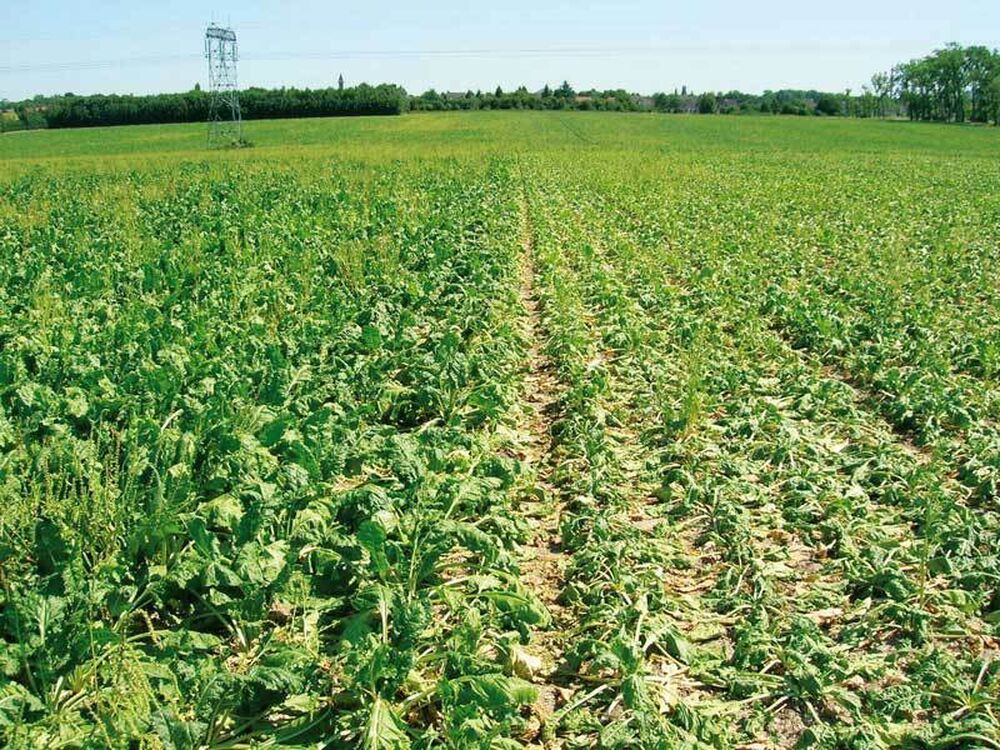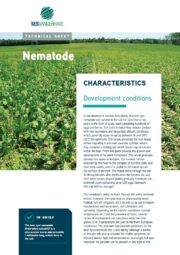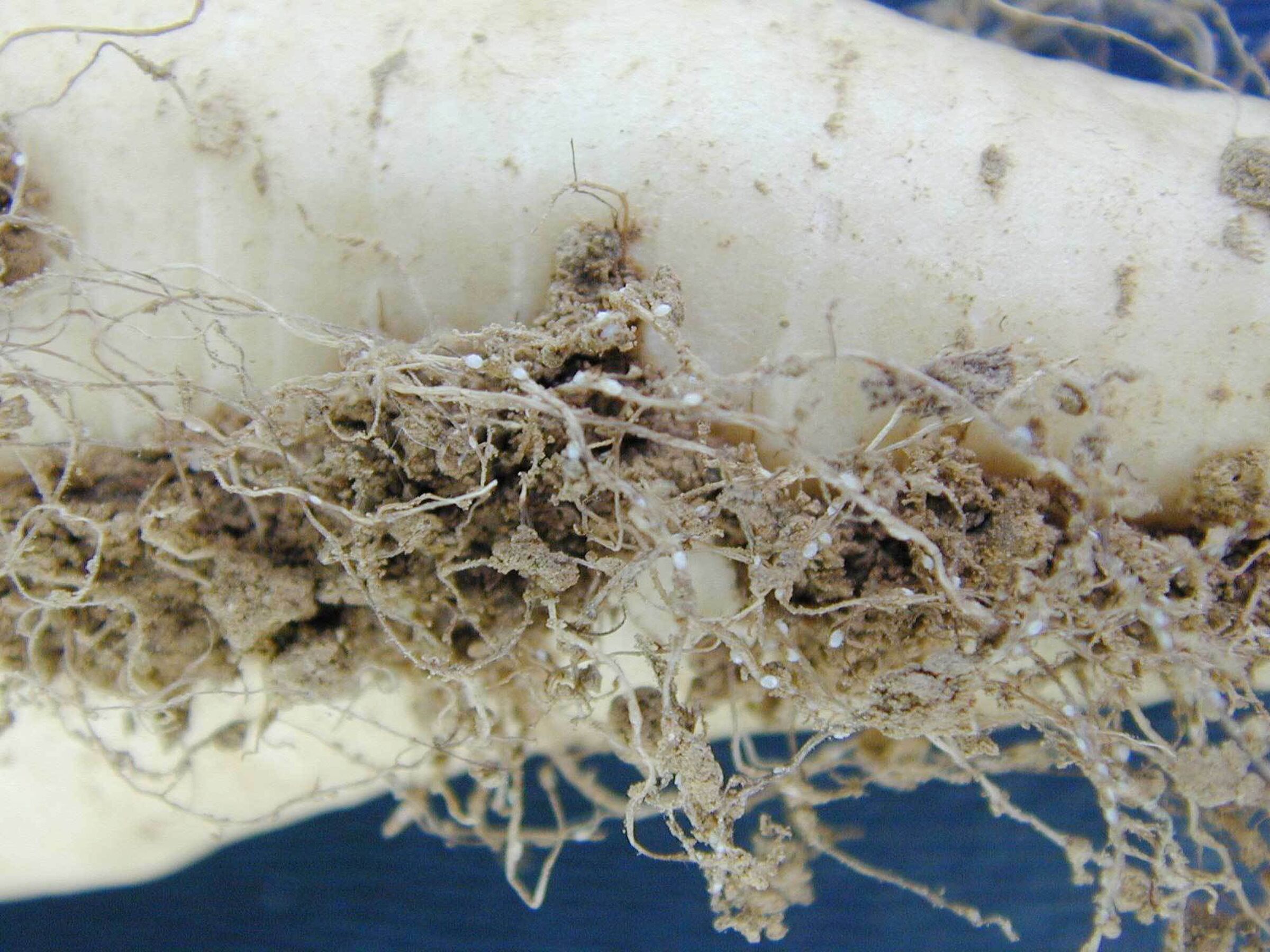White beet cyst-nematode Heterodera schachtii is a white worm approximately 1 mm in length that can move through soil. It is capable of fixing itself onto the root of the sugar beet plant and feeding on the contents of its cells.
This sometimes causes the proliferation of root hair to the detriment of the taproot.
Symptoms
Symptoms of a white, beet cyst-nematode outbreak appear in the form of limited patches in the field. In foliage, wilting can be observed from June onwards and can evolve into yellowing and eventually necrosis of the external leaves. In the roots, the taproot remains inhibited and sometimes root hair form on which small white or brown lemon-shaped cysts can be seen.

Spreading
The nematode’s capacity for moving through the soil is relatively limited. However, cysts can be dispersed by water (rainfall, run-off, irrigation, etc.) and soil transportation (erosion, earth work, uprooting). Climatic conditions that are favourable to the development of the parasite include wet springs (aiding multiplication) and dry summers (increasing symptoms of damage), as well as high soil temperatures. At present, this parasite is one of the main sugar beet pests: it can cause major yield losses essentially through a reduction in root yield and an increase in soil tare. It is found worldwide and in Europe, mainly in sugar beet growing areas where rotation is short and includes other parasite host plants.
Control
Protection of sugar beet against the beet cyst-nematode must above all include agronomic measures:
- Extension of rotation (from 3 to 5 years)
- Early sowing
- Avoidance of host species in rotation (crops: sugar beet, spinach, cabbage and colza; species used as intermediate crops: white mustard, fodder radish and some leguminous vegetables; a multitude of adventitious plants).
- Sowing a nematicide crucifer as an intermediate crop
In some cases, a dual Rhizomania-nematode tolerant variety may also be sown. In France, the ITB advises sowing a dual Rhizomania-nematode tolerant variety in the event of:
- A record of lower output than the local average
- Symptoms of magnesium shortage in the foliage
- Wilting at the hottest time of the day
- The presence of cysts, if possible confirmed by a nematological analysis

